Long before the public sat up and took notice of the staggering number of refugees risking everything to make their way to Europe, Alessandro Penso had made migration to the continent the focus of his work. Since 2009 he has been documenting the conditions of refugees who have attempted to cross borders in search of safety and the hope of a better future for themselves and their families.
Beginning with detention centres in Malta, which many migrants had mistaken for Penso’s homeland of Italy, the photographer then travelled to Bulgaria where, between 2012 and 2013, the number of refugees surged from 1700 to 10,200. He followed migrant agricultural workers in Italy as they moved from one harvest to another. He also accompanied young adults from the Middle East trying to make their way from Greece (which refuses the majority of asylum seekers’ applications), to its neighbouring countries and beyond, capturing the moment when one, Mostafa El Mouzadhir, was deliberately hit by a car in a hate crime, sustaining multiple injuries. When Penso visited him in hospital, he learned that the young Moroccan had received a police order to leave the country within 15 days.
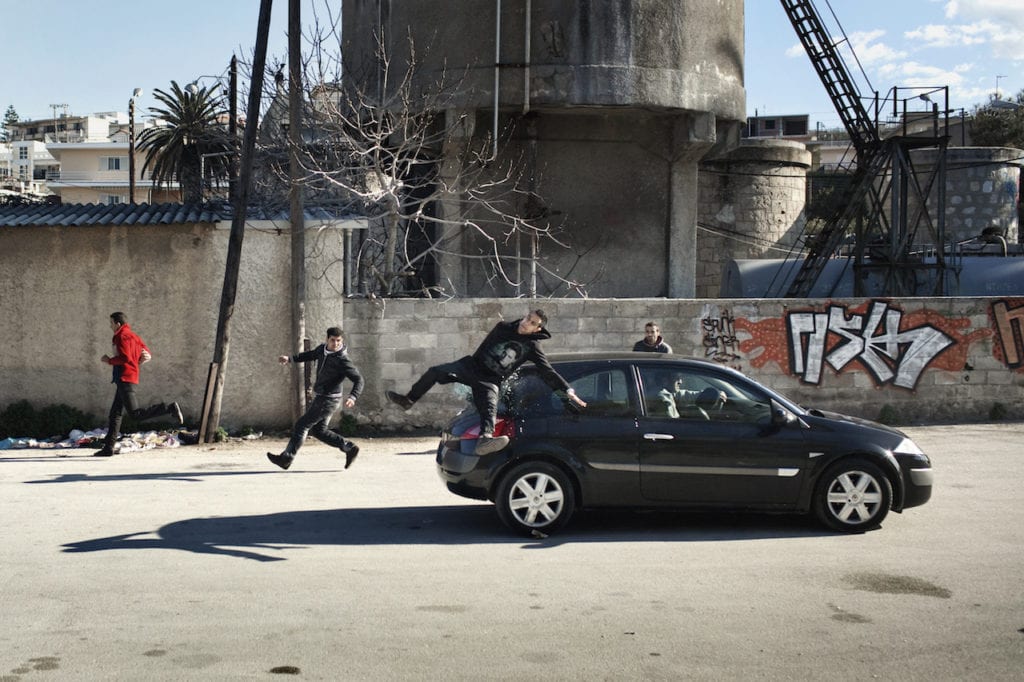
Corinth, Greece, 2012. A group of North Africans was attacked by three locals. Mostafa El Mouzdahir, a 20-year old from Morocco, was intentionally hit by a car and sustained multiple injuries. I went to see him in hospital. With him, he had a police form which asked him to leave the country within 15 days because he was there illegally. Image © Alessandro Penso
Beginning with detention centres in Malta, which many migrants had mistaken for Penso’s homeland of Italy, the photographer then travelled to Bulgaria where, between 2012 and 2013, the number of refugees surged from 1700 to 10,200. He followed migrant agricultural workers in Italy as they moved from one harvest to another. He also accompanied young adults from the Middle East trying to make their way from Greece (which refuses the majority of asylum seekers’ applications), to its neighbouring countries and beyond, capturing the moment when one, Mostafa El Mouzadhir, was deliberately hit by a car in a hate crime, sustaining multiple injuries. When Penso visited him in hospital, he learned that the young Moroccan had received a police order to leave the country within 15 days.

The sum of these experiences cemented Penso’s belief that the refugees were not the only characters in the stories he photographed – the European Union also played a major role. “As difficult as it is to show the plight of the refugees in a dignified manner, a bigger challenge is to talk about how the EU creates the conditions these men, women and children find themselves in, and also how Europeans benefit from them. This is not just a refugee story, it’s our story,” he remarks.
Take, for example, the migrant harvesters he photographed in Italian regions such as Basilicata, Calabria and Puglia. They work for up to 12 hours a day, making only €25, staying in empty buildings without running water or electricity. Thanks to their cheap labour, the cost of produce such as tomatoes and lemons – staples in the local cuisine – stays low.
Their contribution to the economy is seldom acknowledged. In fact, their lack of status affords them virtually no rights at all. Likewise, the way the Common European Asylum System operates forces many refugees to take undue risks. As it stands, asylum seekers are registered in the first country in which they arrive, where they wait weeks and months for a decision on which state will examine their application. Then there is another long wait to see if they qualify for refugee status. The quota of accepted cases is at the discretion of each country.
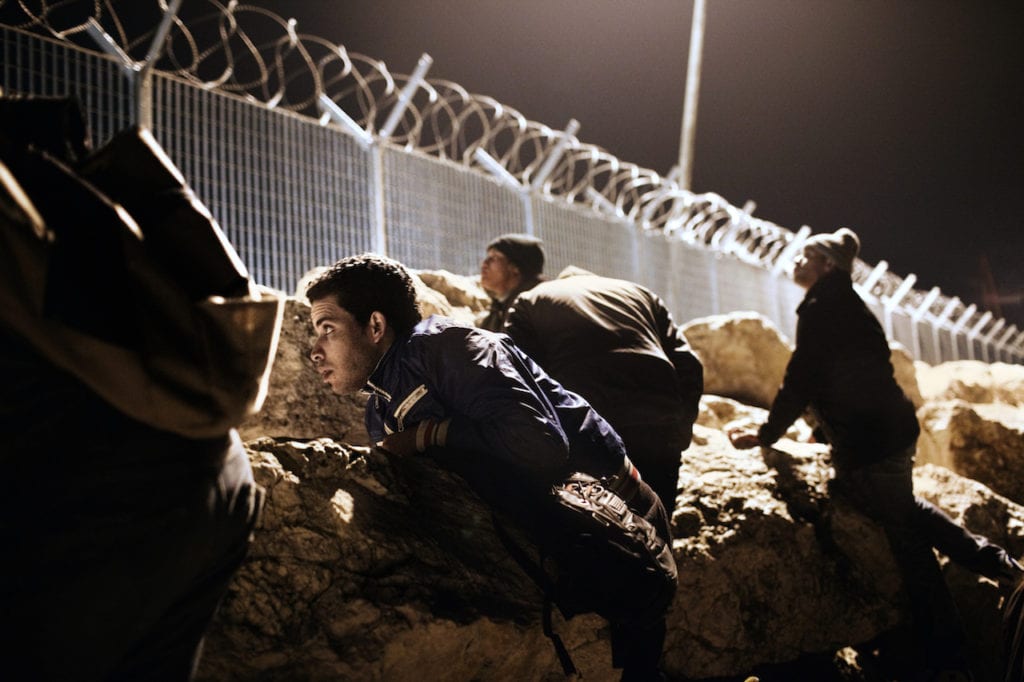
Corinth, Greece, 2012. 17-year old Mohamed from Morocco and his friends hiding behind the rocks at the port during the night, waiting for the right moment to illegally board a ship to Italy. Many young migrants see other European countries as their only hope of a future, and attempt to leave Greece at the first possible moment, often in desperate ways, tolerating desperate conditions. In Greece, around 96% of requests for political asylum were refused in 2014. Image © Alessandro Penso
Take, for example, the migrant harvesters he photographed in Italian regions such as Basilicata, Calabria and Puglia. They work for up to 12 hours a day, making only €25, staying in empty buildings without running water or electricity. Thanks to their cheap labour, the cost of produce such as tomatoes and lemons – staples in the local cuisine – stays low.
Their contribution to the economy is seldom acknowledged. In fact, their lack of status affords them virtually no rights at all. Likewise, the way the Common European Asylum System operates forces many refugees to take undue risks. As it stands, asylum seekers are registered in the first country in which they arrive, where they wait weeks and months for a decision on which state will examine their application. Then there is another long wait to see if they qualify for refugee status. The quota of accepted cases is at the discretion of each country.

This imperative to try to make Europeans understand how they are connected to the plight of migrants was the inspiration behind Penso’s roving exhibition, which moves along one of the main refugee routes. Over the summer of 2014, starting in Bari on Italy’s southeastern Adriatic coast, the journey ended at the doors of the European Parliament in Brussels, stopping in Ancona, Rome, Florence, Milan, Geneva and Strasbourg along the way. “I wanted to make an act more than a photo exhibition. This meant going to people rather than have them come to me,” he explains.
And so, with the help of the photography festival Cortona on the Move, he installed his photographs in a 12m truck stationed in town squares. “There were no references to refugees on the outside of the container, other than a UNHCR logo. The title displayed across the sides, The European Dream: Road to Bruxelles, was meant to be inviting, so that people from all walks of life would come in and find themselves confronted with the images of migrants.
“The truck itself is meaningful because that’s one of the modes of transportation used by asylum seekers. Once inside, maybe you can feel a little bit how they did,” he adds. “I wanted it to be a conversation starter.”
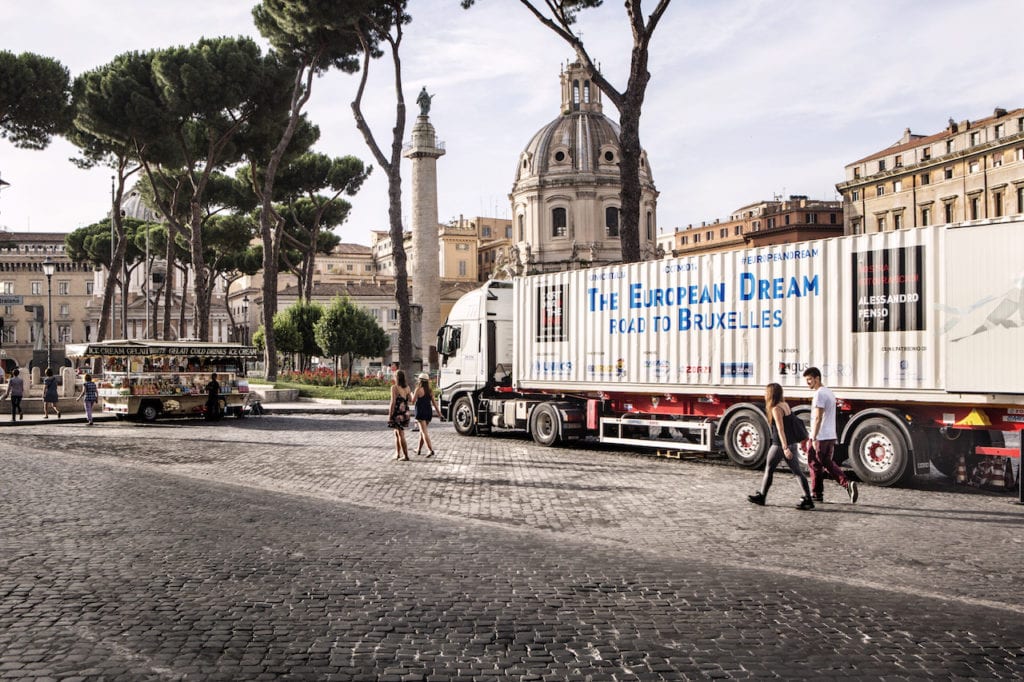
On tour with The European Dream: Road to Bruxelles. Image © Alessandro Penso 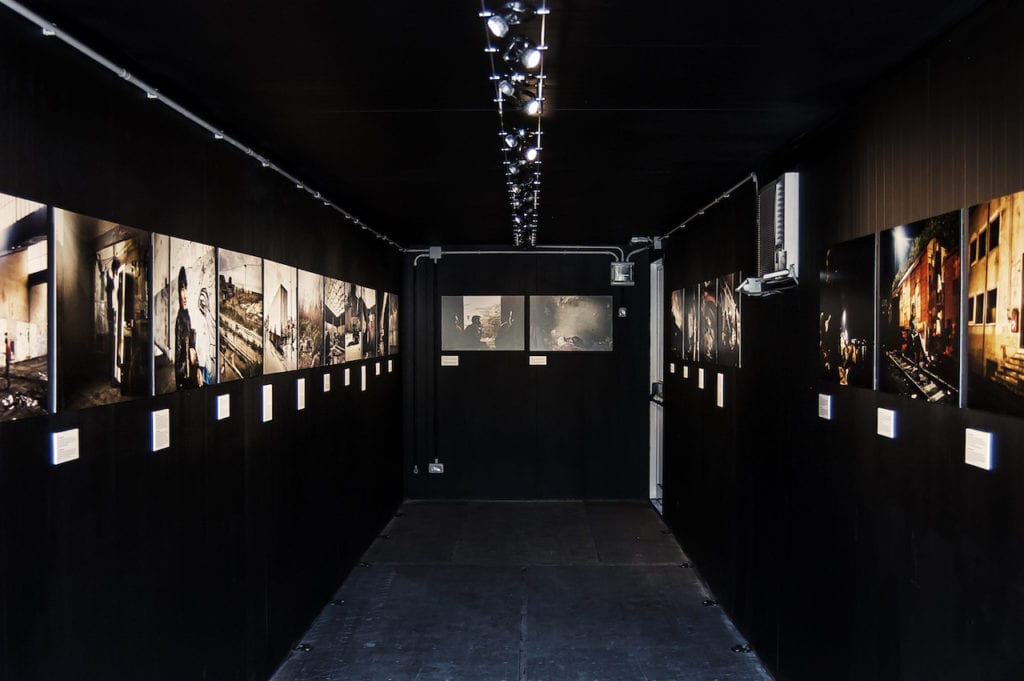
On tour with The European Dream: Road to Bruxelles. Image © Alessandro Penso
And so, with the help of the photography festival Cortona on the Move, he installed his photographs in a 12m truck stationed in town squares. “There were no references to refugees on the outside of the container, other than a UNHCR logo. The title displayed across the sides, The European Dream: Road to Bruxelles, was meant to be inviting, so that people from all walks of life would come in and find themselves confronted with the images of migrants.
“The truck itself is meaningful because that’s one of the modes of transportation used by asylum seekers. Once inside, maybe you can feel a little bit how they did,” he adds. “I wanted it to be a conversation starter.”


Penso was always on hand to answer questions and discuss the issues with the visitors. “It wasn’t just about the pictures, it was about the story and conveying information. So I had to be ready to engage in hard exchanges at every stop. This meant being informed about what was happening at the time – of the history, the numbers, and so on, as well as listening to people’s concerns and addressing them. I often encountered people who showed mixed feelings: they felt empathy for the refugees but were angry that they took up resources.
“For example, there was a young woman in Bari who saw the exhibition in the morning and came back in the afternoon. She said she had thought about it, and that although she initially felt bad for the migrants, she was not responsible for them because it wasn’t her fault they were having problems in their home country.
“I asked her what she wanted to do in the future and she mentioned wanting to follow in the footsteps of a friend who moved to England for a job in an Italian restaurant. I made her realise she had more in common with the refugees than she thought. The difference was that she had a good passport,” says Penso.
Similarly, he chose Brussels as the destination, so staff and politicians at the European Parliament could see what was taking place within the EU. “It’s where they make the laws, so they should see the consequences of their laws,” he believes.
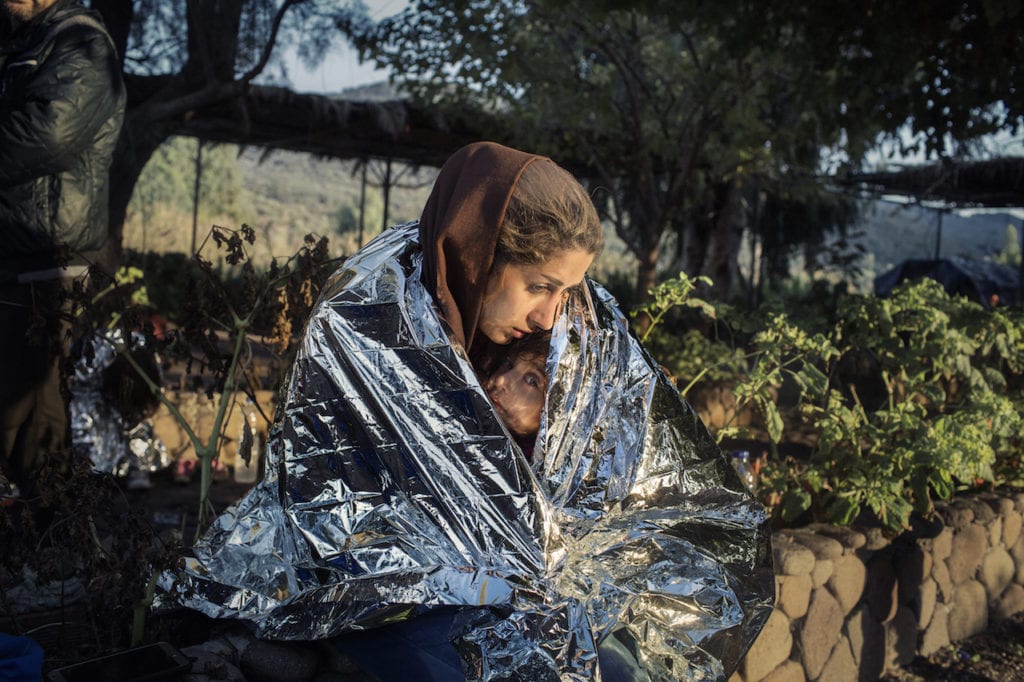
Lesvos, Greece, October 18, 2015. A mother and child wrapped in an emergency blanket after disembarking on the beach of Kayia, on the north of the Greek island of Lesvos. Image © Alessandro Penso 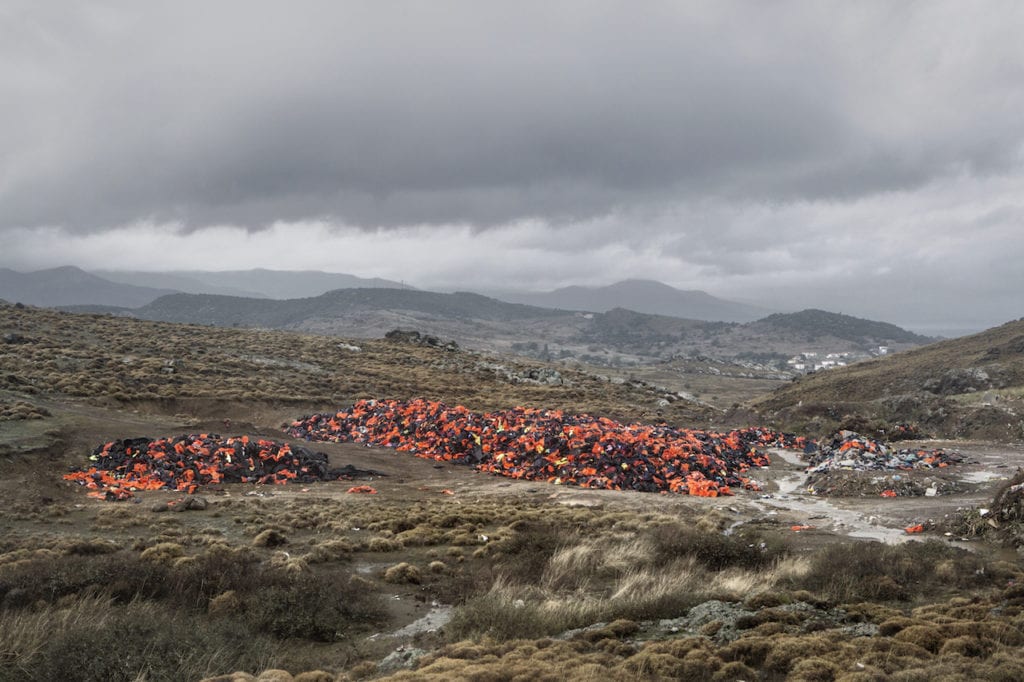
Molyvos, Lesvos, October 23, 2015. A garbage dump near the town of Molyvos with thousands of discarded life jackets, used by refugees and migrants during their journey to Europe. Image © Alessandro Penso
“For example, there was a young woman in Bari who saw the exhibition in the morning and came back in the afternoon. She said she had thought about it, and that although she initially felt bad for the migrants, she was not responsible for them because it wasn’t her fault they were having problems in their home country.
“I asked her what she wanted to do in the future and she mentioned wanting to follow in the footsteps of a friend who moved to England for a job in an Italian restaurant. I made her realise she had more in common with the refugees than she thought. The difference was that she had a good passport,” says Penso.
Similarly, he chose Brussels as the destination, so staff and politicians at the European Parliament could see what was taking place within the EU. “It’s where they make the laws, so they should see the consequences of their laws,” he believes.


Since then the situation on the ground has got worse. More than a million refugees reached Europe in 2015, mostly by sea, usually coming from war-torn Syria, Afghanistan and Iraq. Yet those statistics do not account for all those who go undetected. Frontex, an organisation that coordinates European border management, believes the number is closer to 1.8 million. The routes the migrants follow change constantly, depending on the political climate and security measures. Penso has continued to focus on the issue, covering arrivals in Lesbos and Kos, and documenting all along the Balkan route up to the infamous Calais Jungle.
“The extensiveness of Penso’s coverage, however, is not just geographic,” wrote Lucia De Stefani in Time, which named this project Story of the Year in 2015. “Going beyond the striking events and the overwhelming numbers, he pursues quiet, subtle moments of stillness and solitude that offer a deeper level of comprehension. In Penso’s photographs, we feel the exhaustion and despair. We get the broader context we need to understand this story.”
“The extensiveness of Penso’s coverage, however, is not just geographic,” wrote Lucia De Stefani in Time, which named this project Story of the Year in 2015. “Going beyond the striking events and the overwhelming numbers, he pursues quiet, subtle moments of stillness and solitude that offer a deeper level of comprehension. In Penso’s photographs, we feel the exhaustion and despair. We get the broader context we need to understand this story.”
Even so, Penso has grown increasingly critical of the work he and his colleagues are doing. “We’re not doing our jobs properly if we don’t look at the whole crisis,” he says. “We are implicated if we only zero in on the ‘waves’ of people coming to our shores.” Penso points out that although the migrant crisis has been documented more than any issue before it, there is too little in-depth or investigative journalism, adding that few photographers are focusing on Europe’s culpability and the economy that surrounds the camps.
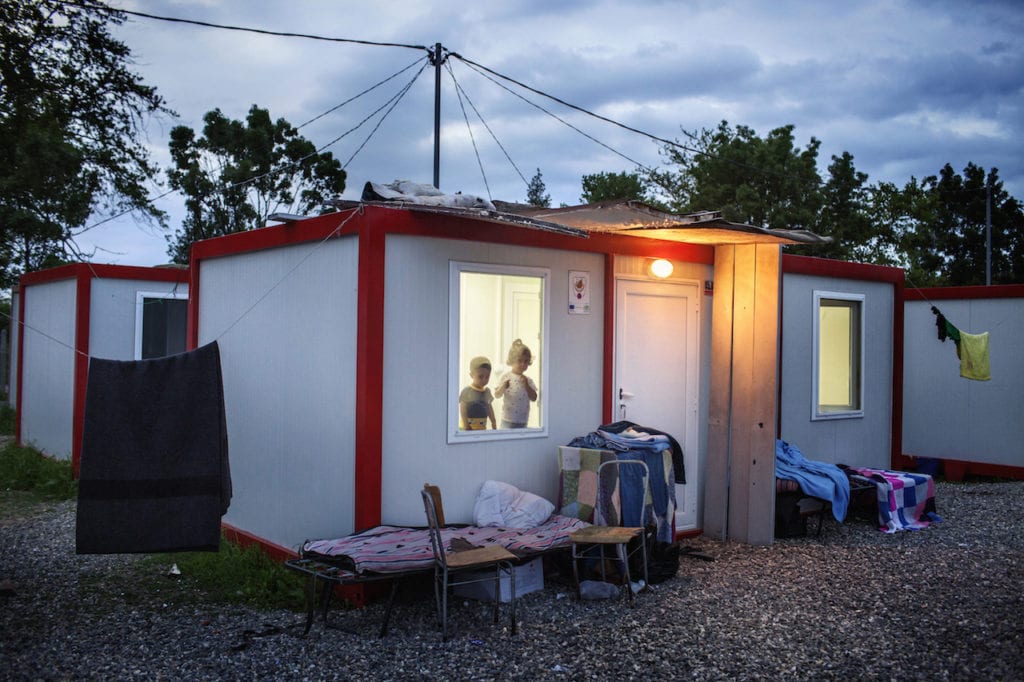
Harmali refugee camp, Bulgaria, 2014. Two Syrian children looking out of the window of the container where they live. Harmanli was a former military base which was converted into a refugee camp during the emergency influx of refugees and asylum seekers in 2013, when Bulgaria became the prime passageway into the European Union for thousands of families fleeing the Syrian conflict. It is the biggest camp in Bulgaria and the one that received most criticism during the emergency. Image © Alessandro Penso
He says that whether there is the possibility to do so or not in all the commotion is beside the point; one should always try. And if people hide their faces, it should be understood as a clear signal not to point the camera at them.
After he took a widely-published picture of an unconscious man being helped by a young woman in Lesbos, and helped to carry him to a doctor, Penso realised he knew nothing about the victim. He tried to find out what happened to him, to get a message to him asking if it was okay to use the image. After several months of not hearing back, he felt he had done his due diligence. Still, he admits to having doubts and feels he needs to some distance from it, to reflect in order to find the best way to do his job.
“It’s no longer about making people aware of the migrants’ movement. They know. It’s now something else, something more personal, something about empathy. I’m still trying to figure out how to approach it.”
www.alessandropenso.com This article was first published in the September 2016 BJP – The Migration Issue www.thebjpshop.com
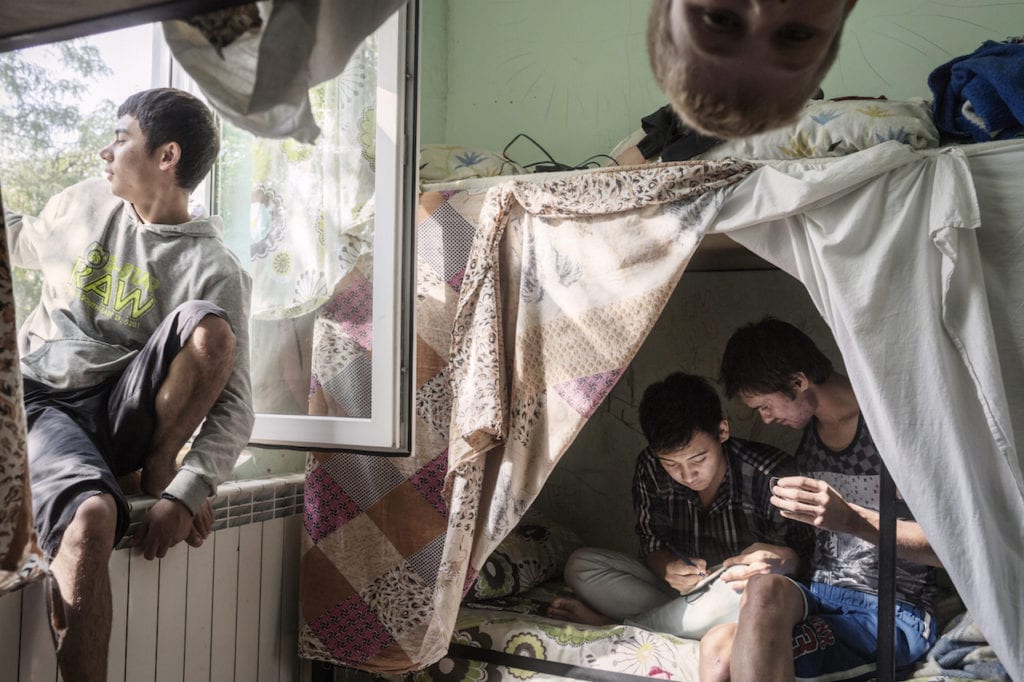
Banya, Bulgaria, 2014. Ali, a 16-year old Afghan; Mohsen, a 14-year old Afghan; and Eda Edris Nazari, a 16-year old Afghan born and raised in Syria, share a room in the Banya refugee centre, which is mainly for minors and vulnerable individuals. Image © Alessandro Penso 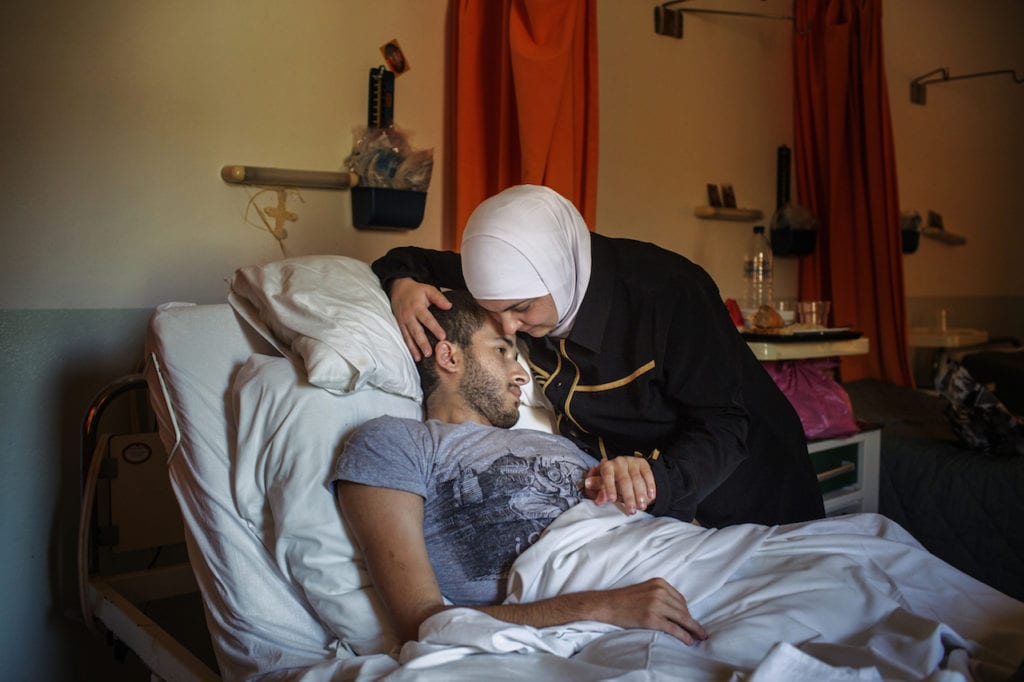
Kos, Greece, July 8, 2015. 38-year old Ama Haider together with her 22-year old son Khalid Hamed, both from Damascus, in the hospital on the island of Kos. Khalid was born with a deformity. Ama says, “We tried everything to get to Europe legally. We knew it was risky for our son, who can’t walk and needs continual assistance. I was also worried about my other two children, who are 15 and 10 years old, but in Turkey nobody helped us.” Ama says that in the end, they chose the most dangerous route: by sea. According to UNHCR, approximately 850,000 refugees and migrants, including children, arrived in Greece by sea in 2015. Image © Alessandro Penso 
Molyvos, Lesvos, October 23, 2015. A garbage dump near the town of Molyvos with thousands of discarded life jackets, used by refugees and migrants during their journey to Europe. Image © Alessandro Penso

He says that whether there is the possibility to do so or not in all the commotion is beside the point; one should always try. And if people hide their faces, it should be understood as a clear signal not to point the camera at them.
After he took a widely-published picture of an unconscious man being helped by a young woman in Lesbos, and helped to carry him to a doctor, Penso realised he knew nothing about the victim. He tried to find out what happened to him, to get a message to him asking if it was okay to use the image. After several months of not hearing back, he felt he had done his due diligence. Still, he admits to having doubts and feels he needs to some distance from it, to reflect in order to find the best way to do his job.
“It’s no longer about making people aware of the migrants’ movement. They know. It’s now something else, something more personal, something about empathy. I’m still trying to figure out how to approach it.”
www.alessandropenso.com This article was first published in the September 2016 BJP – The Migration Issue www.thebjpshop.com




